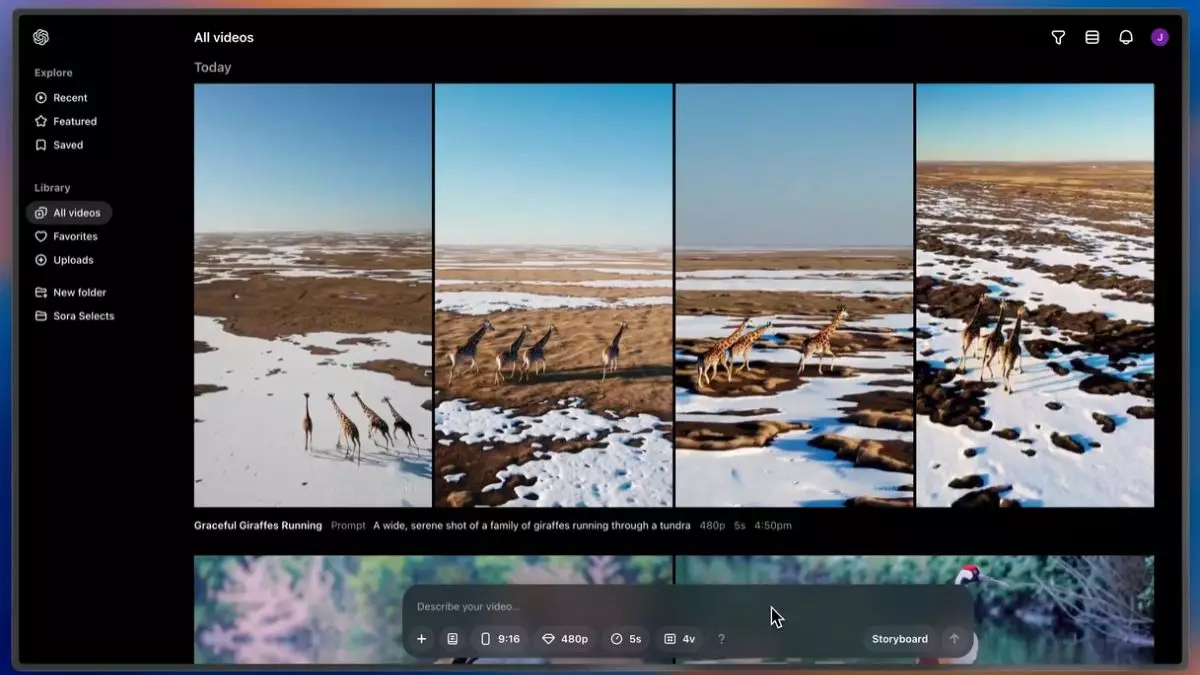OpenAI has officially introduced Sora, its latest innovation in artificial intelligence designed specifically for video generation. The launch took place on Monday, marking the culmination of a long development process that began with an initial preview in February. This unveiling includes a variant named Sora Turbo, promising enhanced capabilities for users. While Sora can generate impressive 1080p videos lasting up to 20 seconds, access to this groundbreaking technology is currently limited to certain paid subscribers of ChatGPT, highlighting the exclusivity and strategic rollout of this advanced AI model.
The Sora platform, which is accessible via a standalone website, is exclusively available to ChatGPT Plus and Pro subscribers—a move that undoubtedly raises both interest and concern within the user community. Free users currently have no options to sign up for accounts, leading to potential frustration among those eager to experiment with video generation. ChatGPT Plus users face a cap of 50 videos per month at a resolution of 480p, with additional restrictions at higher resolutions. The Pro subscription, positioned at a premium price of approximately $200 per month, offers users the potential for significantly greater usage, although specifics around these enhancements remain vague.
This tiered subscription model represents a critical commercial strategy for OpenAI. By creating a system of access that rewards paying subscribers, OpenAI can better manage demand and refine its service before offering it on a broader scale.
At its core, Sora employs a diffusion model that enables the AI to anticipate multiple frames, facilitating a seamless and coherent video creation experience. Users can craft videos using text prompts, a feature that mirrors the capabilities found in other OpenAI products, while a storyboard interface allows for detailed customization at each frame level. This robust combination of functionalities positions Sora as a versatile tool for content creators, marketing professionals, and casual users looking for innovative ways to produce video content.
Users can also enhance their videos by uploading personal images or footage, promoting a blend of personal and AI-generated elements. The flexibility to create content in multiple aspect ratios—widescreen, vertical, and square—further showcases Sora’s ability to cater to various platforms, whether used for social media or other purposes.
An interesting aspect of Sora is the transparency surrounding its data sourcing. OpenAI has disclosed that it gathered data from a variety of channels, including public domains, partnerships with data providers, and the contributions of individuals involved in training the model. By emphasizing ethical data collection, OpenAI demonstrates a commitment to responsible AI development; however, this also raises questions about the balance between data needs and user privacy.
Protecting against the potential misuse of this technology is a significant concern. OpenAI has implemented visible watermarks and metadata in compliance with the Coalition for Content Provenance and Authenticity (C2PA) standards. This measure aims to preserve accountability while recognizing the need for protecting sensitive individuals involved in uploaded media. Furthermore, the company has taken a firm stance against generating harmful content, including strict prohibitions on child sexual abuse imagery and deepfakes, showcasing a dedication to ethical considerations in AI usage.
The Road Ahead for Video Generation AI
As Sora breaks into the AI-generated video landscape, the response from users and the industry will likely shape its evolution. The high demand for video content in today’s digital age positions Sora uniquely to fill an expanding market niche. OpenAI’s commitment to refining the safety features and enhancing user experience will be critical as they gather feedback and iterate upon the model.
Moreover, the phased rollout of Sora necessitates a keen awareness of its impact on creators and consumers alike. Future adaptations could very well integrate user suggestions, industry trends, and technological advancements to refine the offering. Sora’s introduction is not just a step in AI progression; it represents a pivotal moment in how we think about video production in the age of artificial intelligence. The balance between innovation, accessibility, and ethical considerations will define Sora’s legacy and its role in the future of media generation.


Leave a Reply